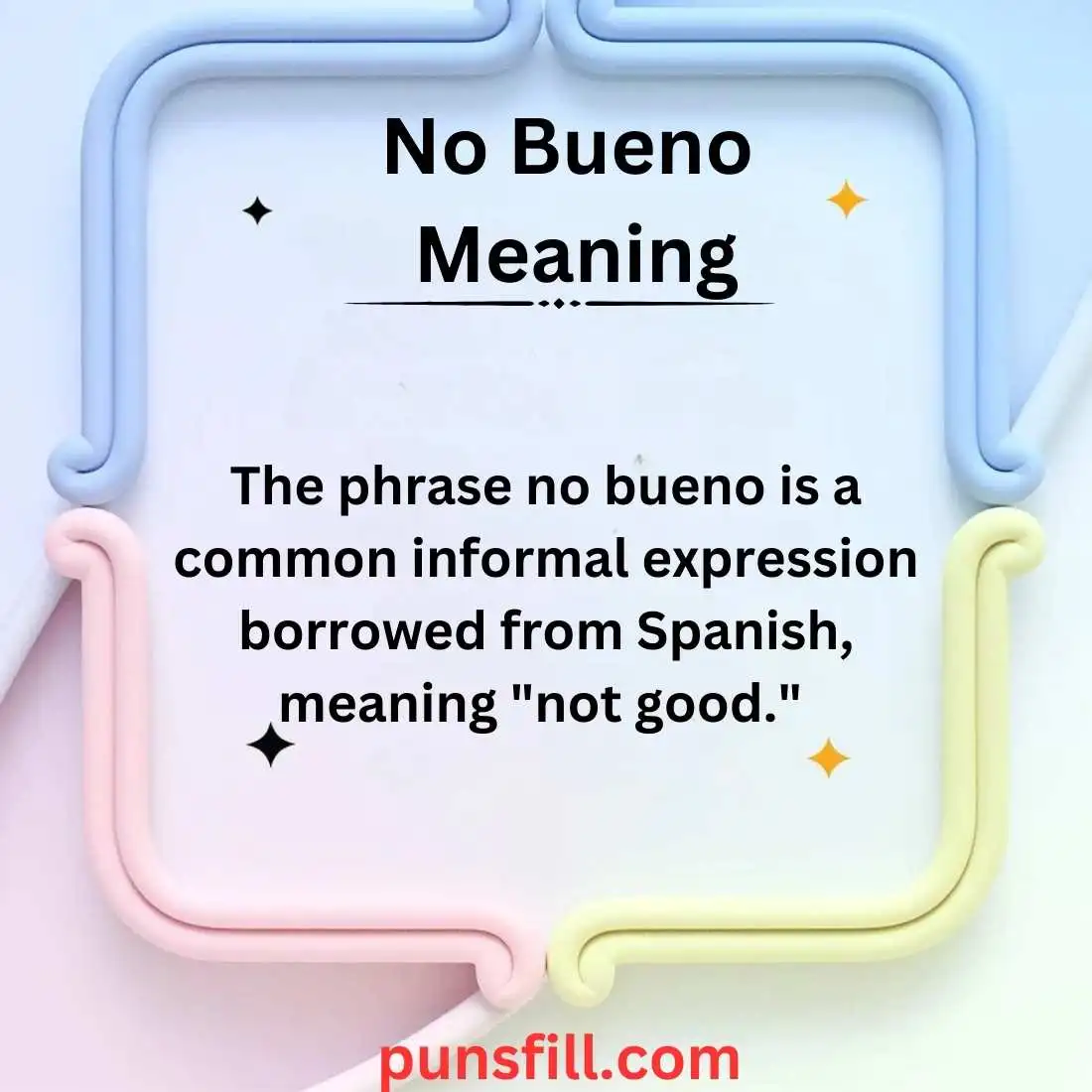Last Updated on February 21, 2025 by Ethan Richards
The phrase no bueno is a common informal expression borrowed from Spanish, meaning “not good.”
While widely recognized, it is often used in a casual or humorous way rather than in formal or professional settings.
For those looking for alternative ways to express dissatisfaction, disapproval, or a lack of quality in different contexts, this article explores various options.
We will provide suitable alternatives that can be used in professional, polite, and casual situations. Additionally, we’ll offer texting examples optimized for clarity and engagement.
Understanding “No Bueno”
Though no bueno translates literally to “not good,” it is not grammatically correct in Spanish. The correct Spanish phrase would be no es bueno or simply malo. However, in English, no bueno has become an informal and widely used phrase to indicate something undesirable.
Depending on the context, you might need a more appropriate expression. Below, we break down alternatives based on tone and situation.
Formal Alternatives
When in a professional or formal setting, it is best to use clear and polished language. Here are some refined ways to express dissatisfaction:
Not Ideal
- Example: “This solution is not ideal, but we can make adjustments.”
- Suitable for professional emails, meetings, and business discussions.
Unsatisfactory
- Example: “The results of the project are unsatisfactory and require further review.”
- Useful when providing constructive feedback.
Needs Improvement
- Example: “Your report is detailed, but the data analysis section needs improvement.”
- Works well for employee evaluations or work critiques.
Suboptimal
- Example: “The current strategy is suboptimal; let’s explore other options.”
- A polite yet firm way to suggest change.
Not Feasible
- Example: “Unfortunately, this approach is not feasible given our timeline.”
- Ideal for declining proposals professionally.
Polite Alternatives
For situations that require a softer tone but still convey concern, consider these options:
Could Be Better
- Example: “The weather could be better, but at least it’s not raining.”
- Maintains optimism while acknowledging a flaw.
Not Quite Right
- Example: “This design is not quite right; let’s refine it further.”
- Good for constructive criticism in creative work.
Less Than Ideal
- Example: “This seating arrangement is less than ideal, but we can make it work.”
- Expresses concern while remaining flexible.
Could Use Some Work
- Example: “Your proposal could use some work before we present it to the client.”
- Encourages improvement without being too harsh.
Not the Best Choice
- Example: “This isn’t the best choice for our company, but we appreciate your effort.”
- A polite way to reject an idea or suggestion.
Casual Alternatives
For everyday conversations, these alternatives keep the tone light and friendly:
Not Great
- Example: “That movie was not great—definitely not worth the hype.”
- Works well in informal chats.
Pretty Bad
- Example: “The traffic this morning was pretty bad.”
- Commonly used for mild complaints.
Not My Favorite
- Example: “That dish was not my favorite, but I appreciate the effort.”
- A gentle way to express personal dislike.
Kind of Rough
- Example: “That exam was kind of rough—I hope I passed.”
- Informal yet effective.
Not the Best
- Example: “His performance was not the best, but he tried.”
- Useful for offering constructive feedback without sounding negative.
Optimized Texting Examples
Here are ten practical, user-friendly texting examples for different scenarios:
- Friend: “How was the pizza? 🍕”
- Reply: “Not great, honestly. The crust was too hard. 😕”
- Colleague: “Do you think this project plan works?”
- Reply: “It’s not ideal; we may need a few revisions.”
- Family Member: “How’s the weather there? ☀️”
- Reply: “Could be better—kind of chilly today. ❄️”
- Boss: “Thoughts on the new policy update?”
- Reply: “It’s suboptimal; some sections need more clarity.”
- Customer Service Chat: “How was your service today?”
- Reply: “Not quite right—my issue still isn’t resolved.”
- Online Review: “Would you recommend this restaurant? 🍽️”
- Reply: “Not my favorite, but the dessert was good! 🍰”
- Team Chat: “Is this deadline doable for you?”
- Reply: “Honestly, it’s a bit rough. Can we adjust?”
- Friend: “Did you enjoy the concert? 🎶”
- Reply: “Could use some work—the sound system was off. 🎤”
- Social Media Comment: “How’s the new iOS update? 📱”
- Reply: “Not the best—some features are buggy. 😬”
- Roommate: “How was the landlord’s response?”
- Reply: “Less than ideal—they’re still delaying repairs. 🏠”
Choosing the Right Alternative
Selecting the best alternative depends on:
- Context: Formal settings require polished language, while casual chats allow more relaxed expressions.
- Audience: Speaking to a boss differs from texting a friend.
- Tone: Do you want to sound neutral, polite, or humorous?
By keeping these factors in mind, you can communicate effectively while maintaining the right level of professionalism and clarity.
Conclusion
While no bueno is a widely understood phrase, it may not always be appropriate in professional or polite conversations. By using suitable alternatives, you can express yourself more clearly and effectively. Whether in a formal email, a casual chat, or a social media comment, the right wording makes a difference.
Next time you want to say no bueno, try one of these alternatives instead! 🚀

Ethan Richards is an accomplished author and dream interpreter known for his insightful and thought-provoking analyses. With a keen eye for detail and a passion for biblical studies, Ethan helps readers unlock the secrets of their dreams, offering clarity and spiritual enlightenment.










